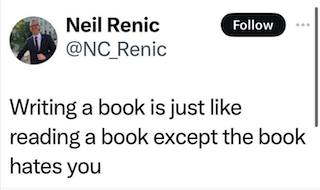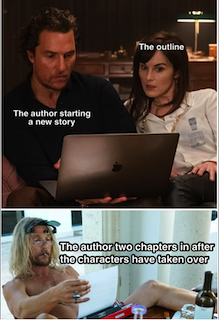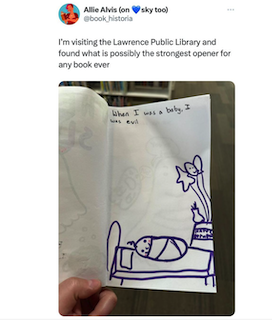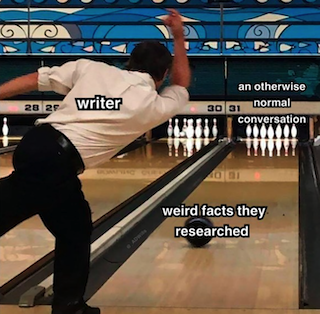
Stakes, bizarrely enough, are a key ingredient missing in many stories. If the characters don’t have skin in the game, why would the audience? The bigger the stakes the better the page turner. Whether on the page or on the screen, what keeps audiences enraptured the most? What makes us spend an entire weekend inhaling a book, a series, or binging that Netflix series?
We want to have to know…what happens.
How does the MC react to a certain problem? Can they recover? Do they win? At what cost? Ultimately, we have to know how it all turns out.
That is the beauty of stories and why we humans love them so much. Real life has stakes but little to no assurances that everything will work out for the better.
Life has plenty of stakes but little to no closure. It is no coincidence that one of the first “matchmaking” sites on the internet was Classmates.com. So many of us, new to the shiny internet, finally had a way of looking up people we once went to school with to see what happened.
Did the Homecoming Court really go on and lead the same charmed life they seemed to enjoy in high school? What about the bully? The smart kid? How about that crush we never quite had the courage to talk to? Did we miss out on a gem or dodge a bullet?
Stakes are the fuel that fires our need for closure. This is critical for any story. Read a book to a five-year-old and try to stop halfway through. Even kids won’t let us off easy. Because of the rising stakes, they’ll want to know, “How does it end?”
Stakes and Structure

Last post, we discussed agency and we took an aerial tour of plot structure. We toured all the major sections of plot, what they do, and how one section should feed into the next.
Now before you guys get the vapors and think I’m boxing you into some rigid format that will ruin your creativity, nothing could be further from the truth.
Plot (storytelling) is about elements, those things that go into the mix of making a good story even better.
Structure is about timing—where in the mix those elements go.
When you read a novel that isn’t quite grabbing you, the reason is probably structure. Even though it may have good characters, snappy dialogue, and intriguing settings, the story isn’t unfolding in the optimum fashion. ~James Scott Bell from Plot and Structure.
Structure holds stories together and helps them make sense and flow in such a way so as to maximize the emotional impact by the end of the tale. How we keep ratcheting emotions is we layer on higher and higher stakes.
If structure is the recipe for a fine meal, the stakes are how, and when we apply the heat. We can buy all the fanciest ingredients for a French meal. Have all the expensive doo-dads. We can measure out every ingredient to the milligram but what happens if we never turn on the heat? Or, conversely, we cook everything on the highest heat possible?
While we DO need to look at how to add the ingredients, timing how we heat the story makes the difference between a masterpiece and a mess.
The Micro-Scale of Story Structure

We’re going to first ZOOM IN and place the novel under a literary electron microscope.
The most fundamental basics of a novel are cause and effect. Super basic. An entire novel can be broken down into cause-effect-cause-effect-cause-effect (yes, even literary works). All effects must have a cause and all causes eventually must have an effect (or a good explanation).
I know that in life random things happen and people die for no reason. While life often IS stranger than fiction, fiction ain’t life.
So if a character drops dead from a massive heart attack, that seed needs to be planted ahead of time.
Villains don’t just have their heart explode because we need them to die so we can end our book. Our MC can’t suddenly discover a journal that EXPLAINS EVERYTHING in the middle of Act Two because we failed to properly plot an actual story and painted ourselves in a literary corner.
Now, all these little causes and effects clump together to form the next two building blocks we’ll discuss—the scene & the sequel (per Jack Bickham’s Scene & Structure). Many times these will clump together to form your ‘chapters.’
Whenever I edit or teach writing, I have a mantra: “Never leave a logical place to put a bookmark.”
Scene & Sequel & Stakes

Word order matters, or we end up with confusion.
Structure’s two main components, as I said earlier, are the scene and the sequel.
The scene is a fundamental building block of fiction. It is physical. Something tangible is happening. The scene has three parts (again per Jack Bickham’s Scene & Structure, which I recommend every writer buy and read and study).
- Statement of the goal
- Introduction and development of conflict
- Failure of the character to reach his goal, a tactical disaster (raise the stakes)
Goal –> Conflict –> Disaster
The sequel is the other fundamental building block and is the emotional thread. The sequel often begins at the end of a scene when the viewpoint character has to process the unanticipated but logical disaster that happened at the end of your scene.
Emotion–> Thought–> Decision–> Action
Link scenes and sequels together and flesh over a narrative structure and you will have a novel readers will enjoy.
Oh but Kristen you are hedging me in to this formulaic writing and I want to be creative.
Understanding structure is not formulaic writing. It is a story delivery system that makes sense on a fundamental level.
Formulaic writing refers to the execution of story structure. It’s a reflection of skill, or rather, lack thereof. So relax, structure is your friend. It will make writing and finishing books easier, and it comes with the added bonus of not confusing the bejeezus out of the readers.
This little recipe also helps us slowly (and later quickly) turn up the heat on our characters.
Skin in the Game

One of the biggest mistakes I see, particularly with new writers, is we can be too nice. There is a good reason normal people (code for “readers”) eye us writers with a deserved degree of suspicion. It takes a certain level of sadism to write great stories. When any mere boring mortal would want to back away from pressure or explain away a problem, we writers must plunge ahead and let the characters and (by proxy) the readers suffer.
The more they suffer, the better.
Why do you think A Game of Thrones was such a worldwide phenomenon? Huge, huge stakes! Global and personal. We, the audience, learned pretty quickly not to get too attached to any one character because they were likely to not only die, but die horribly.
So long as the HBO writers stuck with that recipe, global audiences couldn’t get enough. The minute they rushed the story, broke the rules and took away the stakes? The series imploded into a disaster.
Refer to post: A Game of Thrones: A Song of ‘I Literally Can’t Even’
A major reason the HBO series devolved into disaster is they’d done an incredible job of raising global and personal stakes. Stakes drove audiences to forgive major delays in later seasons. We were all biting our nails to the quick, our nerves shredded…then the characters all got a magical pass.
Spoiler Alert: Ice Zombies no big deal and winter never came.
How Vested are Your Characters?

When we craft any story, we must ask ourselves, “What do they have to lose?”
I love pretty prose probably far more than the next person, but using cerulean instead of blue is not what makes audiences care. We aren’t there for the wordsmithery, yet it is very easy for us writers to fixate on a new way of saying green instead of focusing on the bits that matter.
If you go look at most of the authors who are guaranteed to sell a lot of books, usually the prose is fairly plain. These authors understand it is the story that matters most. Stakes are what will stake our reader in place and refuse to let them go until THE END.
Thus, ask yourself:
What happens if my MC fails?
Who suffers if my MC fails?
How does their world change for the worse if the MC fails?
If nothing changes, we are missing a key ingredient to our story. As the story progresses, the challenges will get harder physically and emotionally. Our characters need a compelling reason to keep going.
Upping the Stakes

Going back to my recipe metaphor, there is a time and place to up the stakes and to back off a bit.
Have you ever been to an action movie that was just fight scene after chase scene after fight scene? You never got a chance to take a breath and walked away needing a nap…or a drink?
Here is an instance of the writers either making the sequels too short in duration or not having enough overall. The sequel is the breather where the characters process and act/react to what’s happening. If our sequels are missing or underdeveloped, this can make our characters come across as one-dimensional.
Audiences don’t care deeply about those kinds of characters.
Then we have the opposite. Sometimes filmmakers try to take stories that are excellent on the page—because audiences have the window into what the characters are thinking via the narrative—and put it on film.
Problem is, you have to cast really, and I mean really superlative actors to pull it off…and even then *yawns*
These are frequently the artsy films that seem to never take off. All the stakes are internal, existential and…meta. While critics might love them, usually these films are a flop with regular audiences.
In fact, any time I see the phrase “a visual masterpiece” I know the movie is likely to suck.
Do both these “genres” have a fan base? Sure.
There will always be people who will go to the next Mission Impossible move just like there will always be folks, pinkies outstretched, who loooove anything at Cannes. Yet, those are the fringes and, if we want to reach the biggest audience, the fat middle part of the bell curve is a better bet.
The Goldilocks Zone

When it comes to most genre fiction, we should look to the scenes and sequels for cues as to where, how and how much to raise or lower the stakes.
If we go back to our example last week with LOTR (Lord of the Rings). When Frodo and Samwise set off from the Shire WE the audience know they are eventually going to have to destroy the ring in Mount Doom…but they don’t. Had Tolkien started off with that, Gandalf would never have pried the Hobbits from under the bed.
On each leg of the adventure, there is a resting period and then Tolkien ups the heat. He makes the invading armies closer than they realized, bigger than they imagined, and he progressively shortens the ticking clock.
What if we aren’t writing epic high fantasy?
Genre and Stakes

I have a post where y’all can go check out the different genres. We need to know what genre we are writing so we know what the rules are. And yes, we need to follow the rules. We need to know the rules to break the rules. That is art. Breaking rules we don’t know is just called being a hack.
If I am writing a mystery, then I know my story needs to open with a crime and that the entire point of the story is figuring out whodunit (And Then There Were None). Writing a thriller? A big bad thing happens at the beginning…and it is a race against time to stop way bigger bad thing from happening (Jurassic Park).
On and on. Look at your story’s genre and see what the reader expectations are…then feel free to break rules to deliver what they wanted but never expected in that way (Gone Girl).
Stake Sizzlers

What are some ways we can organically up the stakes in our story? Remember to Be a Secret Keeper. Resist the urge to explain. Audiences, in large part, are hanging on because they want to find OUT some piece of information. This is why flashbacks, by and large, are a no-no.
If we know WHY Eric Northman (in True Blood) is dark and brooding the first time we see him, it kills the thrill. Yes he is a vampire and they are a notoriously emo bunch, but why is he uniquely emo? Unlike (IMO the tedious Bill Compton) Eric Northman was far more interesting because we didn’t get all this backstory right out of the gate.
He remained a mystery longer, which was why I felt he was a far more powerful driver for the series.
Hold off on self-actualization. Characters who are too sane, too evolved and too emotionally healthy are a fiction snooze fest. The trick is that they are likely to believe they have their sh!t together…when that is far from the case. OR, if they know they’re a mess, they will vastly underrate their faults, over magnify their virtues or completely miss what their issues are altogether.
The story then, should be designed to peel away their self-delusion and make them face their darkness so they can change for the better.
The MC must be sympathetic and redeemable. Before anyone shouts me down, I get this has a lot of latitude. Antiheroes and anti villains are becoming increasingly popular. That said, there are certain lines we cannot cross with most audiences. Feel free to join in the thirteen-year-long argument on my post What Went Wrong with the Star Wars Prequels?
Anakin Skywalker is a little kid killer. Never redeemable. Ever. The end.
What are your thoughts?
Do you struggle with being too nice to your characters? I know I still do. Often I have to go back and write in some mess ups to keep the tension going. Are you bad about over sharing? Over explaining? Can you see some tricks in here to keep audiences wanting more?
I love hearing from you! Anything you’d like to add? Maybe books, series or movies that handled stakes really well? Do you have any questions? Topics you’d like for me to explore in future blogs?
And remember, my perennial author branding book, Rise of the Machines: Human Authors in a Digital World and my mystery thriller The Devil’s Dance are both on sale on Kindle right now for only .99.
Whether it is comments, shares, sales, or reviews, these are the things that keep us content producers (and authors) going and able to keep delivering. I always appreciate your support and love being able to keep doing this for you!
The post Stakes: How to Hook an Audience All the Way to THE END appeared first on Kristen Lamb.
